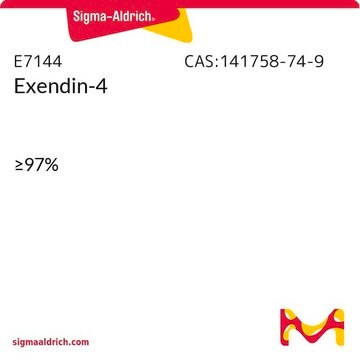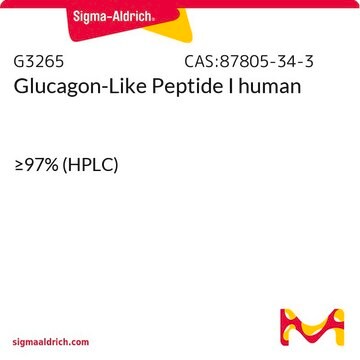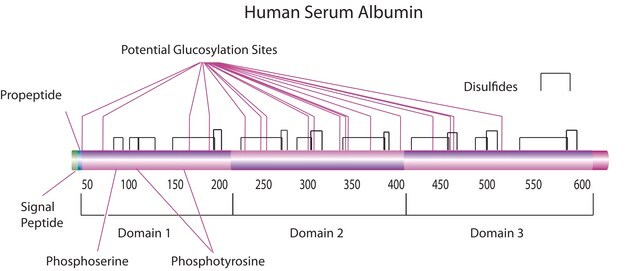SAB4200795
Anti-Exendin-4 antibody produced in rabbit
affinity isolated antibody
Synonyme(s) :
Anti-Exenatide
About This Item
Produits recommandés
Source biologique
rabbit
Niveau de qualité
Forme d'anticorps
affinity isolated antibody
Type de produit anticorps
primary antibodies
Clone
polyclonal
Forme
buffered aqueous solution
Concentration
~1 mg/mL
Technique(s)
indirect ELISA: 0.125-0.25 μg/mL using 1 μg/mL Exendin-4 protein for coating
Numéro d'accès UniProt
Conditions d'expédition
dry ice
Température de stockage
−20°C
Modification post-traductionnelle de la cible
unmodified
Description générale
Exendin-4 mimics the activity of mammalian incretin hormone glucagon-like peptide 1 (GLP-1) and thus play a role in the control of glucose. This includes the secretion of insulin in a glucose-dependent manner, negative regulation of high glucagon secretion, and increased duration of stomach emptying. In type 2 diabetes patients, this peptide can be administered subcutaneously for glycemic control, when metformin is unable to produce adequate results. Exendin-4 promotes the neogeneration and proliferation of β-cells, and thus aids in the regeneration of pancreas. It acts as a ligand to exendin receptor and leads to an elevation of acinar cell cAMP levels.
Anti-Exendin-4 antibody specifically recognizes synthetic Exendin-4 and does not cross react with GLP-1.
Immunogène
Application
Forme physique
Autres remarques
Vous ne trouvez pas le bon produit ?
Essayez notre Outil de sélection de produits.
Code de la classe de stockage
10 - Combustible liquids
Classe de danger pour l'eau (WGK)
WGK 3
Point d'éclair (°F)
Not applicable
Point d'éclair (°C)
Not applicable
Faites votre choix parmi les versions les plus récentes :
Certificats d'analyse (COA)
Vous ne trouvez pas la bonne version ?
Si vous avez besoin d'une version particulière, vous pouvez rechercher un certificat spécifique par le numéro de lot.
Déjà en possession de ce produit ?
Retrouvez la documentation relative aux produits que vous avez récemment achetés dans la Bibliothèque de documents.
Notre équipe de scientifiques dispose d'une expérience dans tous les secteurs de la recherche, notamment en sciences de la vie, science des matériaux, synthèse chimique, chromatographie, analyse et dans de nombreux autres domaines..
Contacter notre Service technique







